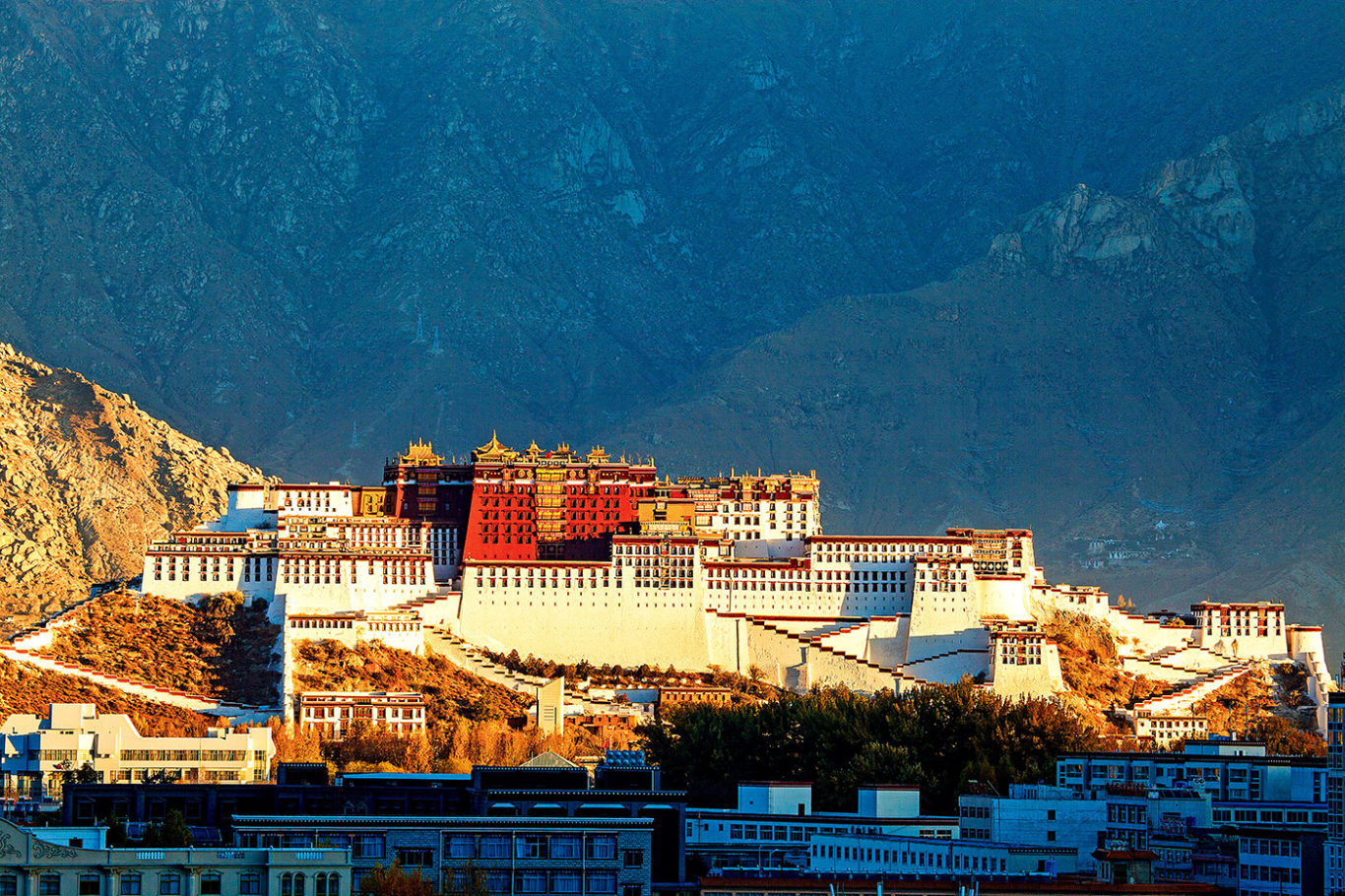What Do Tibetan Buddhists Practice?

The Potala Palace in Lhasa was the winter palace of the Dalai Lamas from the 17th century to 1959. | View Stock / Alamy Stock Photo
Tibetan Buddhism, also known as Vajrayana or tantric Buddhism, embraces a wide variety of practices—including visualization, mantras, and yogic practices—and harnesses mental and physical energies for use on the path to enlightenment.
After Buddhism arrived in Tibet from India in the 7th century, Tibet became the center of Buddhism in central Asia. Over the centuries, the teachings and traditions of Tibetan Buddhism spread to neighboring Mongolia, Bhutan, Nepal, and parts of what are now Russia and India. Tibetan Buddhism is the predominant religion of the Himalayan region today. Since the Chinese communist takeover and resulting Tibetan refugee crisis in the mid-20th century, Tibetan Buddhism has spread to the West and become one of the most widely practiced forms of Buddhism around the world.
So what do Tibetan Buddhists believe and practice? Learn more about the rich history and practices of Tibetan Buddhism here.
Discover Level 2, Deck 6:
What is the history of Tibetan Buddhism? After Buddhism arrived in Tibet from India in the 7th century, Indian Buddhist practices were combined with Vajrayana practices to create a distinct religion.
What are the different schools of Tibetan Buddhism? The many schools of Tibetan Buddhism are often divided into two main groups: Nyingma (older schools) and Sarma (newer schools).
What are some important texts in Tibetan Buddhism? Among the many Tibetan Buddhist texts, Bardol Thodol (often mistranslated as The Tibetan Book of the Dead) is the most well-known.
Who are some prominent figures in Tibetan Buddhism? From Padmasambhava to His Holiness the 14th Dalai Lama, these important teachers have shaped and preserved Tibetan Buddhism.
What is Buddhist tantra? Often conflated with sex in the West, tantra seeks to harness a wide variety of experiences and mental and physical energies for use on the path to enlightenment.
What is the role of retreat in Tibetan Buddhism? Tibetan Buddhism embraces retreat as a way to withdraw from everyday life and immerse oneself in practice.
Where is Tibetan Buddhism practiced, and how did it come to the West? The religion is practiced not only in Tibet but also across the Himalayan region and around the world.
What’s the difference between a monk, a nun, a tulku, a rinpoche, and a lama? Monks and nuns lead lives of renunciation and simplicity, while rinpoches and tulkus are considered reincarnated teachers.
Do you have to learn the Tibetan language to practice Tibetan Buddhism? The short answer: no. Many contemporary Tibetan teachers use hybrid practice texts that include the original Tibetan script and translations.
Why are there so many images of buddhas, godlike creatures, and demons in Tibetan art and temples? Many of the figures in Tibetan art and temples are actually buddhas and bodhisattvas appearing in either a peaceful, semi-wrathful, or a wrathful form.
Recommended Reading:
- The Vajrayana Journey, by Reggie Ray
- Mahayana / Vajrayana Practice, by The Dalai Lama
- Let Mind Nature Be Your Guru Through Mystical Devotion, by Ken McLeod
- An American Tantra – Interview with Justin von Bujdoss by Karen Jensen
- The Way of Freedom, by Ken McLeod

Tricycle is more than a magazine
Gain access to the best in sprititual film, our growing collection of e-books, and monthly talks, plus our 25-year archive
Subscribe now